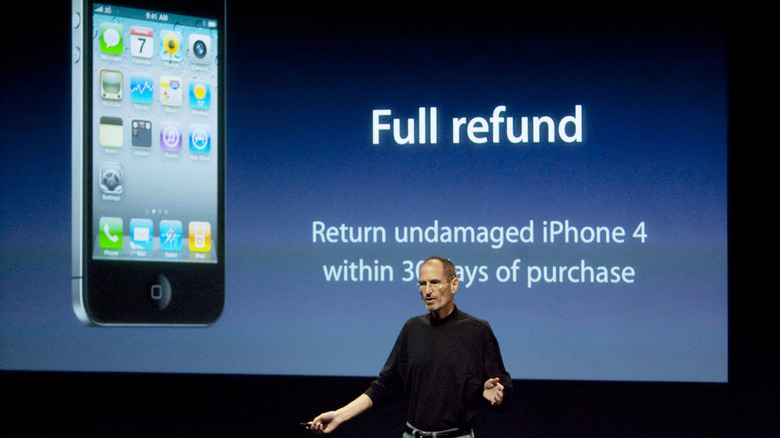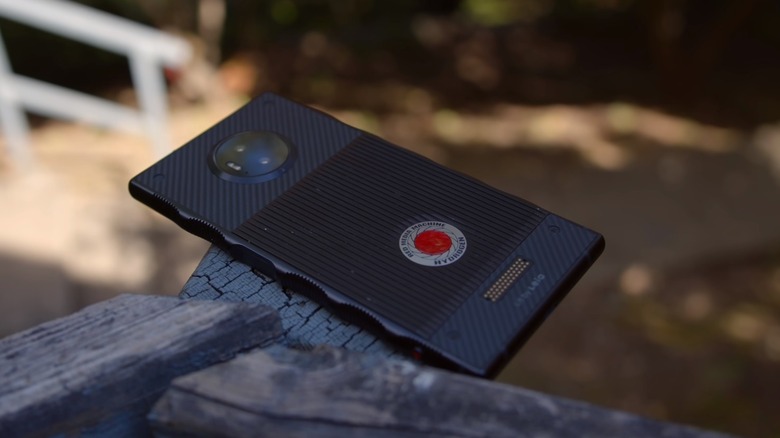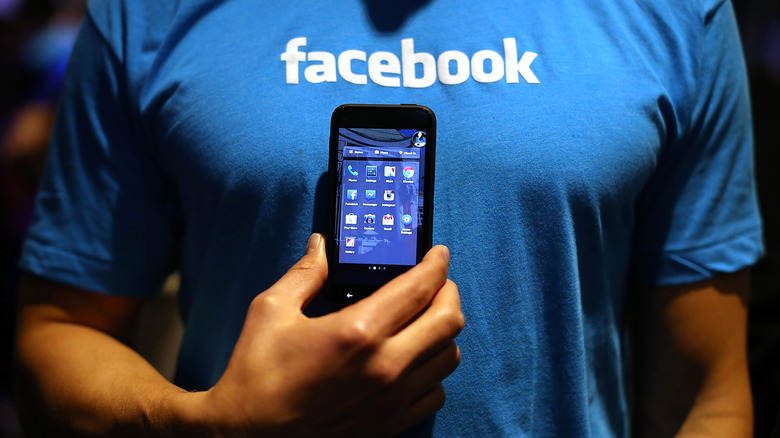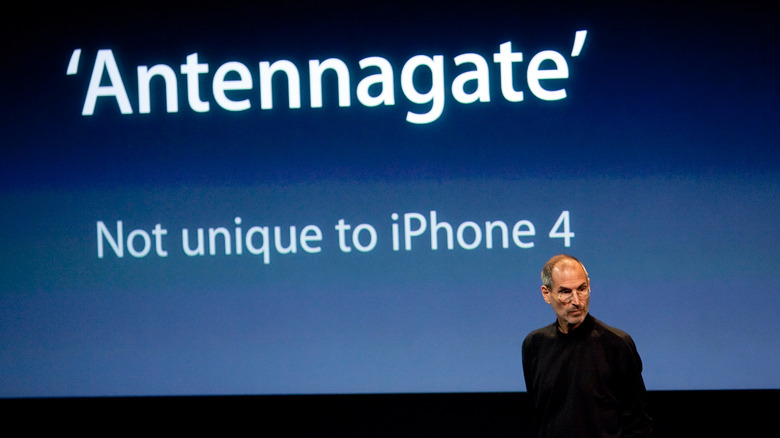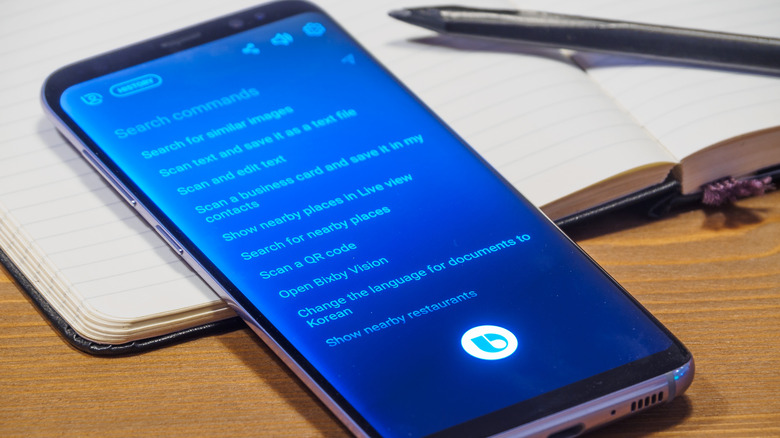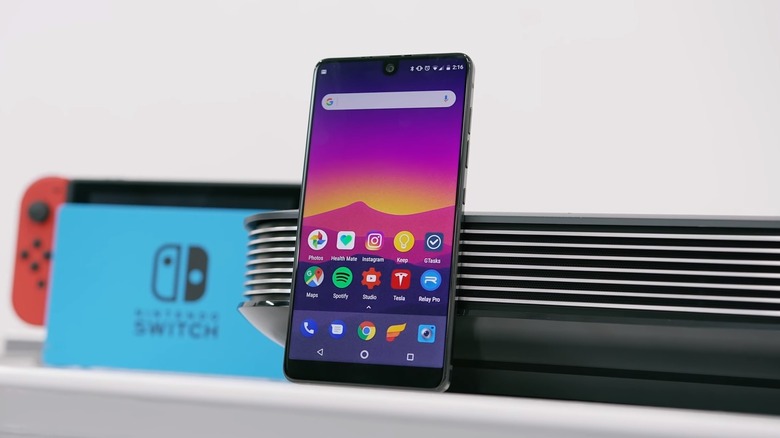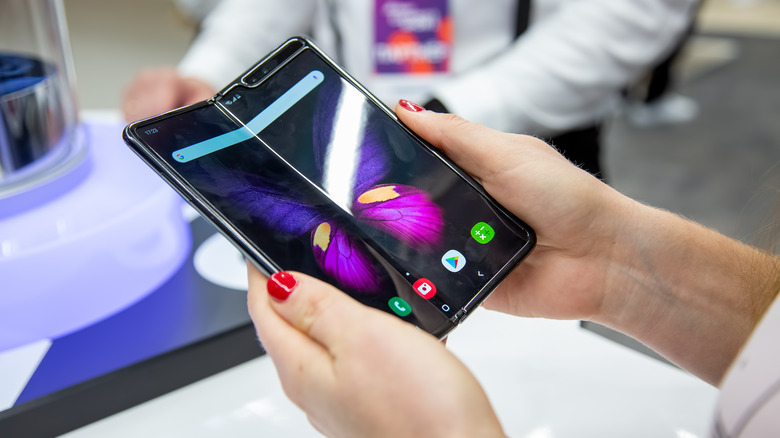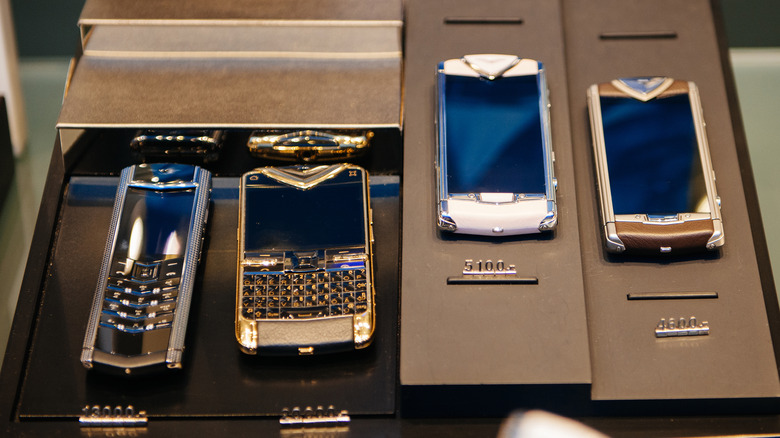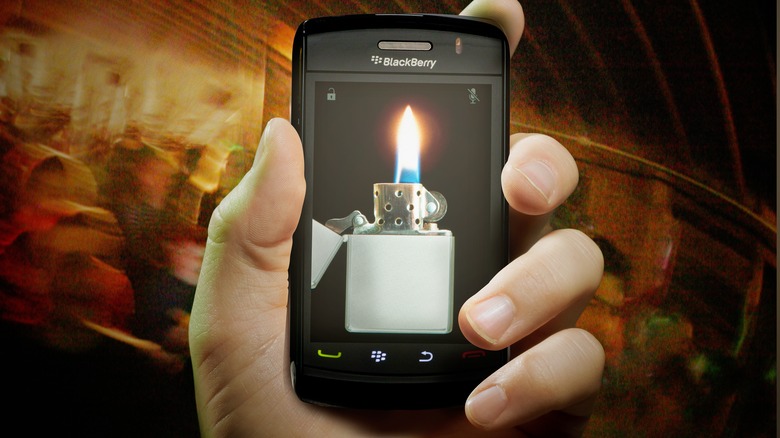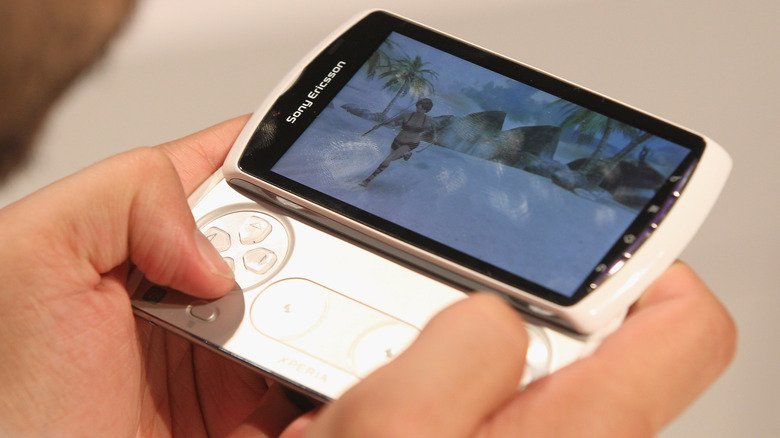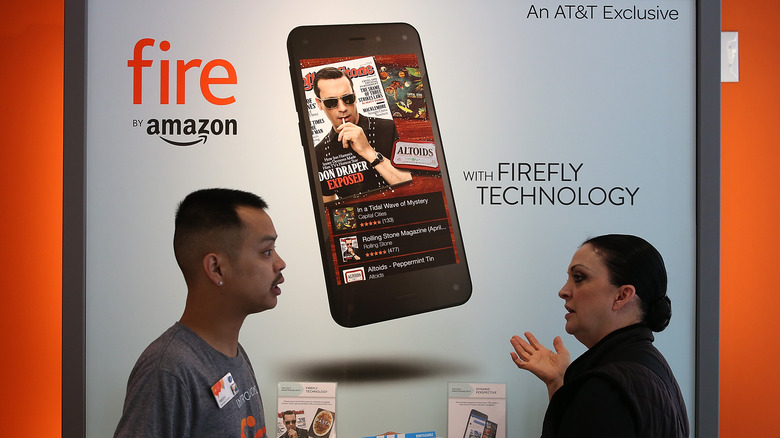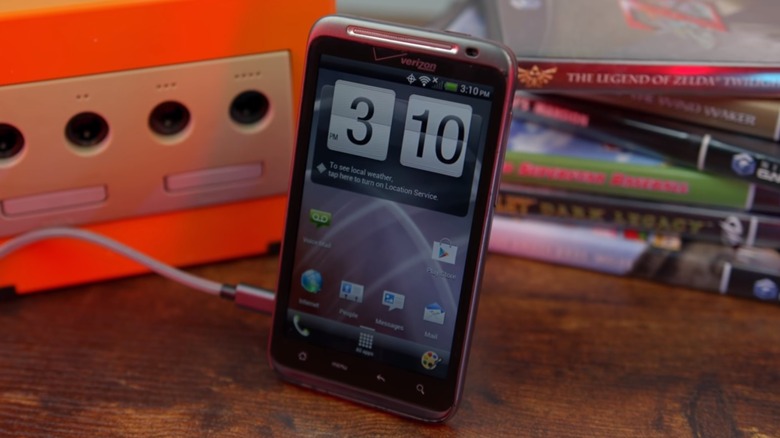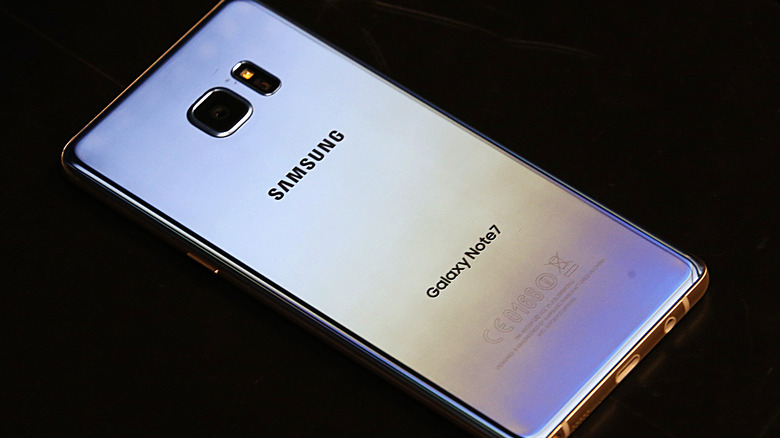The Biggest Phone Flops Of All Time
The world of smartphones is one of the most rapidly evolving in the tech industry, to the point where the label "phone" is almost a bit misleading. Yes, they still get used to call people sometimes, but more often, they're our calendars, fitness trackers, on-the-go sources of entertainment, and connections to friends and family. In fact, the smartphone has become one of the key devices that most of us can't live without, with many users forming fierce alliances with their favorite smartphone brand.
However, for every smartphone success story, there are an equal number of devices and features that end up as disasters. Some of them fail due to poor market timing, some due to usability problems, and some simply due to the fact that consumers aren't interested in them. These flops can often be a result of the industry's smaller players trying to do something different to stand out, but even segment leaders like Samsung and Apple aren't immune tothe occasional high-flying launch that ends up going down like a lead balloon.
RED Hydrogen One
Cinema camera maker RED had plenty of fans excited when it unveiled plans for its first-ever smartphone, but that excitement quickly turned to disappointment when the Hydrogen One was eventually released. There were the small issues, like the fact it was delayed a year, and therefore came with a Qualcomm Snapdragon 835 processor rather than the Snapdragon 845 available in every other flagship phone. Then there were the big issues, like the much-hyped "holographic" display, which was fuzzy, ineffective, and unpleasant to look at (via Mashable).
RED tried to market the Hydrogen One as a phone that was doing "something different," and therefore shouldn't be compared too closely to its more mainstream rivals (via The Verge). The trouble was, the supposedly groundbreaking features it did have were underwhelming at best, and the company didn't even manage to capitalize on its one area of undisputed expertise, which is camera technology. The Hydrogen One's camera was mediocre and would have been perfectly adequate on a lower-end smartphone. But, this was a device that retailed for a starting price of $1,300, significantly more than most other mainstream flagships on the market at the time. Its disappointing display, underwhelming camera, and generally outdated design ensured it was an instant flop, with RED's CEO eventually retiring from the company altogether (via H4VUser.net).
HTC First (Facebook Phone)
HTC was still a major player in the smartphone market back in 2013, so when it announced a phone built in collaboration with Facebook, it seemed like the idea might take off. However, mere months after the phone had launched, mobile carrier AT&T had discounted its subsidy price to just $0.99 in a futile attempt to shift units (via Insider). So, what went wrong? Well, the phone's failure can be attributed to two main factors, the first of which being that most consumers simply didn't want a phone that pushed Facebook as heavily as the First did. SlashGear's review of the HTC First noted that it was "as tightly integrated with Facebook services — and as exclusionary of others — as you'd expect." While Facebook was very popular with users as a social media platform, its Facebook Home launcher didn't win many fans. It stood to reason that few buyers would want a phone where Facebook Home came pre-loaded as standard.
The second reason for the HTC First's failure was the competition at the time. The phone's actual hardware was decent but not outstanding, yet it was supposed to compete with the Samsung Galaxy S4 and iPhone 5S. Plus, the HTC First launched just one month later than HTC's own One flagship. The phone's reliance on Facebook apps meant users had a less comprehensive choice of software compared to other, similar Android phones, and the apps that were installed were often more cumbersome to use than their Google-developed counterparts.
Apple iPhone 4's Antennagate
Even the industry's most successful companies suffer from the odd product failure here and there, and one of the biggest in Apple's history came to be known as "Antennagate." The scandal centered around the pioneering design of the iPhone 4, which for the first time in iPhone history, featured an external metal band wrapped around the phone which functioned as an antenna. This meant that a user's hand could make contact with the antenna, which in turn could affect the signal. The effect was most noticeable when held in a user's left hand, as the two parts of the antenna that were otherwise separated by a plastic spacer would then be bridged, changing their signal length. This would, in turn, cause the phone's signal to be weakened or lost altogether.
Apple initially responded by claiming the issue was simply a software fault that caused an inaccurate signal measurement to display, but after further backlash, the company eventually folded and offered users a refund as long as the phone was undamaged. A class-action lawsuit was also filed against Apple because of antennagate, which was eventually settled two years later. It entitled anyone who purchased the phone to either a free case or $15 cash (via Engadget). The saga might have been a headache for Apple's PR team in the short term, but it's had little effect on the overall popularity of iPhones, as they're still the most popular smartphone model in the U.S. today by a considerable margin (via Canalys).
Samsung Bixby
Upon its launch in 2017, Samsung made a great deal of emphasizing the "endless" uses the Siri-rivaling virtual assistant had, and yet just a few years later, it faded out of the spotlight almost entirely. Buyers of the Galaxy S8 and S9 had little choice but to take notice of Bixby, as both phones featured a dedicated and non-customizable Bixby button. However, the feature was criticized for being less intelligent, less useful, and more intrusive than most of its competition (via Digital Trends). Shortly after announcing the launch of Bixby on phones, Samsung unveiled plans to feature the assistant in a range of home devices and appliances, from TVs to washing machines. But even then, consumers weren't interested, choosing to either use a rival assistant or forgo the voice command function entirely.
Samsung could have continued to force Bixby upon users in the hopes that eventually a wider user base would form, but instead, it appears to have chosen the path of least resistance and scaled back its Bixby support in favor of integrating Google Assistant and Alexa. The latest Samsung smartphones do still feature Bixby, but it's hidden away by default, and anyone who's not specifically looking for it probably won't even know it's there. It seems only a matter of time before Samsung abandons the idea entirely, especially since recent phones like the S21 and S22 have pushed further integration of Google Assistant and Alexa instead of Samsung's own virtual assistant.
Essential Phone
Giving a new product a name as definitive as the "Essential Phone" is always going to be a gamble, and as it turned out, the phone was anything but essential for the vast majority of smartphone buyers. Developed by Android co-founder Andy Rubin, the Essential Phone promised to be different from its competitors, with an almost bezel-less display, built-in modularity, and minimal bloatware for a faster, sleeker user experience. SlashGear's first impressions of the phone confirmed that it ticked all these boxes and more, but we were left wondering if it was different enough to attract the attention of consumers.
The short answer to that question was no, as the Essential phone only managed to sell less than 90,000 units in its first year on sale in 2017, even with an aggressive Cyber Monday discount that cut the price of the phone down to just $399 (via Android Authority). That was undisputedly great value for a flagship at the time, but consumers either didn't seem to know or didn't seem to care. By February 2020, Essential had run out of money and the company folded, even though it later emerged that the Essential Phone 2 was deep into the development cycle (via XDA Developers).
Samsung Galaxy Fold's splitting screen
The first-generation Samsung Galaxy Fold was released to media reviewers in April 2019, with the goal of making it available for general sale shortly after. However, soon after sending these early units out to reviewers, photos began appearing on social media depicting broken or malfunctioning Galaxy Fold screens, and Samsung was forced to take the device back for further testing. The company's CEO called the failed launch "embarrassing," but promised the issues would be fully investigated and fixed (via Ars Technica).
Eventually, the phone did launch for consumers with a hefty price tag of $2,000. Samsung promised buyers that the folding screen would last 200,000 folds before breaking, but independent testing proved that figure was slightly over-optimistic. The phone was found to last only 120,169 folds before breaking in CNET's test, although it's worth pointing out that the machine that was used to conduct the test folded the phone significantly faster than a human would. Thankfully, the Galaxy Z Fold 4 has moved past the line's disastrous launch and initial teething troubles, and is an excellent choice as long as buyers are willing to cough up a full $600 more than the price of a Galaxy S22 Ultra.
Vertu's luxury smartphones
The ever-evolving nature of smartphones means that consumers often only use them for two years or less before upgrading to the latest model. Prices have got progressively more expensive for flagship phones over time; it wasn't too long ago that $500 seemed like a lot for a phone. Now, the average top-end device will cost over double that figure. However, even the latest iPhone or Galaxy model can't come close to Vertu's smartphones, which retailed for over $10,000 each (via Wired). The reason for their eye-watering cost was the materials they were built with, as models often came encrusted with crystals, plated with gold, or bound with the finest hand-tanned leather.
The idea of an ultra-exclusive "luxury" smartphone is one that might have sounded plausible in theory, but in reality, most consumers with enough cash simply didn't care. Unlike a high-end watch or collectible classic car, a diamond-encrusted phone will be just as obsolete in two years' time as any other mainstream phone model. Wealthy customers cared more about having the latest phone than the flashiest one, and Vertu never found many customers. The company folded in 2017 with a reported £128 million in accounting deficits (via Wired).
BlackBerry Storm
BlackBerry was at one point the best-selling smartphone maker in the U.S., controlling 43% of the market (via Insider). The company's phones became the benchmark for others to beat, yet BlackBerry itself was not the most innovative of manufacturers. Sure, the company added basic cameras, extra connectivity features, and more powerful chipsets, but its overall formula remained the same: phones with a focus on messaging that invariably featured physical QWERTY keyboards. Then, in 2007, Apple launched its new iPhone, and BlackBerry suddenly had a major challenger. The iPhone was captivating buyers with its screen-only approach, and BlackBerry knew it needed to create an equivalent to hit back at the competition.
It launched the Storm, the first BlackBerry with no physical keyboard and a large iPhone-style touchscreen. The only problem was, it was an unmitigated disaster. Thanks to the popularity of the BlackBerry brand, the Storm sold around 1 million units over its first year on sale in 2008, but almost every one of them was faulty in some way. The phone's exclusive American carrier Verizon suffered around $500 million in losses, and turned to BlackBerry's parent company RIM to help foot the bill (via BGR). Even the few units that did work as planned suffered from slow touchscreen responses, poor software optimization, and a generally clunkier experience than Apple's upstart offering. BlackBerry never recovered from the Storm's failure, with the company only clinging on to less than 1% of the U.S. market share by 2012.
Sony Xperia Play
Mobile gaming now dominates the gaming sector, with global yearly revenues generating more than PC and console gaming combined (via giffgaff). But, it wasn't always this way, and phone manufacturers had more than a few false starts before finding a formula that worked. One of the biggest flops in the "gaming phone" segment was the Sony Xperia Play, which featured a slide-out gaming pad in a similar vein to the PSP Go. In fact, it's said that the PSP Go was the main inspiration for the Xperia Play, although the phone had a slightly larger screen and a better resolution, at 480 x 854 pixels.
However, the phone offered a much smaller selection of games than its console equivalent, and this was its undoing. SlashGear's review of the phone noted that there was "a disconnect between Sony Ericsson's hardware and the games on offer," because only six PS1 titles and a handful of Android games were available at launch. The phone itself wasn't particularly powerful, its screen was mediocre, and it offered less value for money than most of its non-gaming rivals at the same price point. It wasn't good enough on its own as just a phone, and Sony's half-baked effort to port over games that could take advantage of the unique layout ensured the Xperia Play was also doomed as a portable console.
Amazon Fire Phone
Amazon has stayed ahead of its competition by constantly branching out into new sectors, from launching checkout-less grocery stores to making comedy shows filmed on doorbells. It was only natural, then, that the e-commerce giant would try its hand at making a smartphone, and in 2014, the Amazon Fire Phone was launched. It came with a number of unique features, including motion-based gesture control and a built-in help desk designed to provide round-the-clock customer support.
However, the phone's high price put consumers off, with exclusive carrier AT&T eventually having to offer a subsidy price of just $0.99 to shift units, down from an initial price of $199. The Amazon-specific Fire OS was also more limited than a regular Android OS, with no access to Google's ever-popular Play Store and minimal support for updates. Consumers simply weren't interested, and Amazon reportedly ended up with $83 million worth of unsold inventory that it eventually had to write off (via CNET). A pricey mistake, but one that Amazon has been careful not to repeat, as it has stayed out of the smartphone manufacturing sector ever since.
HTC Thunderbolt
When the HTC Thunderbolt was unveiled in 2011, HTC was widely regarded as one of the best makers of Android smartphones, but the Thunderbolt did a lot to shatter that reputation. Upon its release, it was billed as being ahead of the pack, as it was one of the first handsets to offer 4G connectivity in the U.S. (via CNET). SlashGear's Thunderbolt review confirmed that it was indeed a lot faster in terms of its upload speed and download speed than anything else on the market, but there were several glaring issues that overshadowed this achievement. Firstly, the phone's battery life was atrocious, with SlashGear's reviewer only able to get a mere three and a half hours of use on a full charge.
Then, there was the faulty front camera, rendered effectively useless due to its inability to be recognized by anything other than HTC's own camera app. Skype, the most popular video calling app at the time, wouldn't recognize either the front or the rear camera, making it impossible to use on the Thunderbolt. There were also problems with the phone rebooting, a lack of software updates, and no support for popular streaming apps like Hulu and Netflix (via GottaBe Mobile). Early adopters of the phone assumed these were just teething troubles and that fixes would be on the way shortly, but months later, these fixes never came. The failure of the Thunderbolt really eroded the trust that buyers had in the company, and set it on a path of seemingly terminal decline.
Samsung Galaxy Note 7 fires
The Samsung Galaxy Note 7's battery fire issue is probably one of the most well-remembered smartphone failures, as it triggered a global recall that cost the firm an estimated $5.3 billion (via BBC). Every single Galaxy Note 7 made was recalled after an alarming number of reports of devices smoking or catching fire, including one particularly high-profile incident where a phone caught fire on a plane, causing an emergency evacuation (via The Verge). A full investigation was quickly launched, and Samsung found the problem was caused by two separate manufacturing faults that affected a large proportion of the recalled batteries. The first fault was a high welding burr on the positive electrode that could penetrate the layer of insulation tape and make contact with the negative electrode, causing a short circuit. In addition, a number of batteries were found to be missing the insulation tape altogether (via Samsung).
The second fault centered around a number of negative electrodes that had been bent during the manufacturing process, causing overheating issues in the upper-right corner of the battery. The long and short of it is that Samsung's own manufacturing and quality control procedures were essentially at fault. The company has been extremely careful not to repeat its mistakes with its newer phones, and has retained its place as the best-selling Android phone brand despite this high-profile blunder (via Counterpoint Research).
